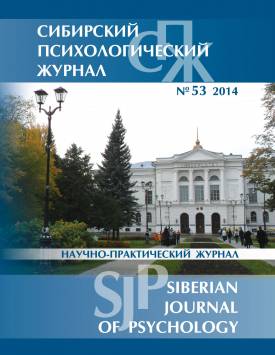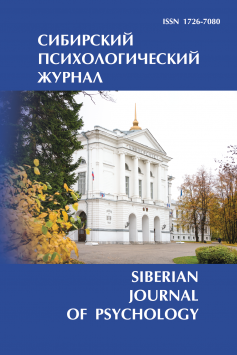The temporal phasic space of life events of patients with psychogenic asthma
This study develops a synergistic approach in psychology. In this direction we have obtained new data that cannot be detected by statistical methods. The paper presents an empirical analysis of temporal events. Temporality is seen as the extension of time. This concept defines the time interval in which exhaustive specificity of an object can be revealed. According to the terms of anthropological psychology the man is represented as an open, extended to the world of multidimensional psychological system in the space-time organization. The subjective reality is present in this system. The multidimensional structure of this system includes both physical time and semantic coordinate ("topochronos"). This allows the "space" to be considered both as physical and semantic. It is assumed that the "time" vectors are arranged in an orthogonal hyperspace. "Openness" of a psychological system is defined as the phase space volume of time vectors. This space has both the statistical (stochastic) center and the center of a chaotic dynamical system. The solution of such problems is also caused by a practical need for further development of clinical and psychological typology of diseases, which takes into account individual psychological characteristics of patients within the framework of an integrative system and higher anthropological approach. In terms of "openness" we consider the temporal characteristics of the "past-present-future" continuum and its eventfulness. The time of retrospection and anticipation, as well as the quality of retrospective and an-ticipative events in individuals with various forms of bronchial asthma (BA) is determined. In the first problem "openness" of the system, its temporal, frequency and cognitive-emotional evaluation of event retrospection and anticipation were analyzed. Openness of psychological system of BA patients was different from healthy individuals. The degree of distance in time varied depending on the form of asthma and participation of psychological factors in pathogenesis. ANOVA showed a difference in retrospection time in BA patients (F = 4.82 p = 0.009). The longest retrospection time was found in patients with psychogenic asthma. The average time of anticipation of events was significantly different in various groups of patients. Most distant future was noticed in patients with atopic asthma (BA1) (3.02 ± 1.98) and the least distant was in patients with psychogenic asthma (BA3) (0.51 ± 1.40). Patients with atopic asthma showed the highest positive assessment of the future, while those with psychogenic asthma gave the lowest positive assessment. The negative evaluation of future events varied depending on the form of BA (F = 3.25 p = 0.04). Events were classified by the degree of personal reaction and type of events. The frequency of "highly important" future developments is most pronounced in patients with BA1 (2.73 ± 1.5), BA2 (somatic-psychogenic asthma) (1.37 ± 1.56) as compared to BA3 (0.59 ± 0.91. (F = 45.53 p = 0.000; the Scheffe method with p <0.001). The second task considered the assessment of phase spaces of temporal structures of life events in patients with asthma. Chaosity of quasi-attractor of BA3 patients cluster was much higher (10E +26 vs. 10E +25), than in other BA groups. This suggests a more unstable dynamic type of organization of the temporal continuum. The chaotic centers of temporal quasi-attractors in BA1 and BA3 groups were the closest. The subsequent withdrawal of parameters and the change in quasi-attractors volume reduce the dimension of quasi-attractors. In such a way the controlling parameters of the dynamic system have been defined. The controlling parameters are retrospective time, and positive and negative assessment of retrospective time. They considerably reduce the distance between the chaotic centers in the phase space.
Keywords
психогенная бронхиальная астма, жизненные события, темпоральный анализ, фазовое пространство квазиаттрактора, psychogenic bronchial asthma, life events, temporal analysis, phasic space quasi-attractorAuthors
| Name | Organization | |
| Yazykov Konstantin G. | Siberian State Мedical University (Tomsk); Tomsk State University | yazk@mail.ru |
| Nemerov Evgeny V. | Siberian State Мedical University (Tomsk) | nemerevg@mail.ru |
| Kornetov Alexandr N. | Siberian State Мedical University (Tomsk) | kornetov@mail.tomsknet.ru |
| Karavaeva Elena V. | Siberian State Мedical University (Tomsk) | karavaev38@mail.ru |
| Pryaduhina Natalya I. | Siberian State Мedical University (Tomsk) | nata_p@sibmail.com |
| Ivanova Alla A. | Siberian State Мedical University (Tomsk) | ivanova_nezd@mail.ru |
| Lukashova Victorya V. | Siberian State Мedical University (Tomsk) | lukasovavv@mail.ru |
| Novikova Anastasiya S. | Siberian State Мedical University (Tomsk) | anastasia_and_ko@mail.ru |
References

The temporal phasic space of life events of patients with psychogenic asthma | Sibirskiy Psikhologicheskiy Zhurnal – Siberian Journal of Psychology. 2014. № 53.
